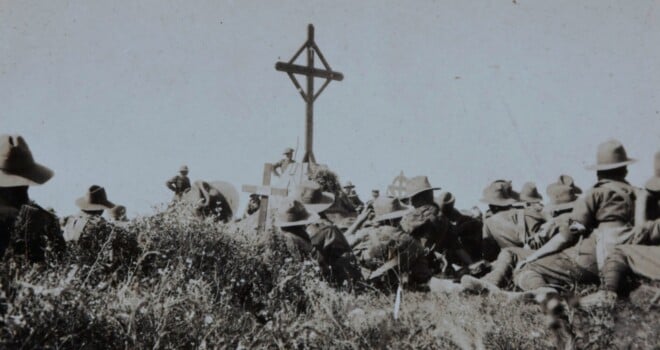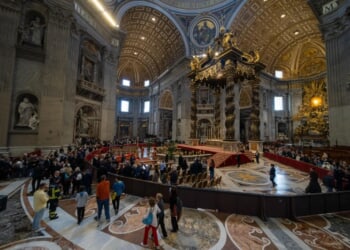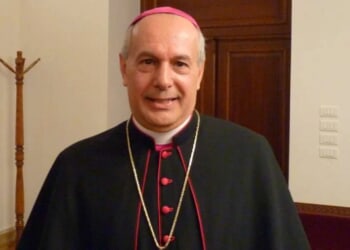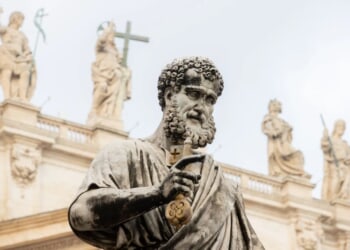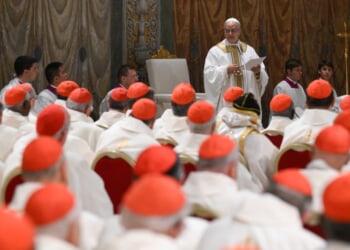I was sitting on the carpet, thankful that it was padded, with my back against the wall. Seated in front of me were a dozen teenage boys, all high school sophomores, assigned to me for small group discussion. I threw the forum open for questions or comments, and almost immediately a hand went up. One of the boys asked, “So how do we know that Jesus really loves us and died on the Cross for us? I mean, it happened a long time ago. How do we know that someone didn’t just make it all up?”
“That’s a fair question,” I replied. “Young man,” I said, “there is not a serious historian in the world that would deny that Jesus walked on the earth or even that He died on the cross. The question is—did He rise from the dead, is He God, and can He change your life?”
“I could answer your question in a number of ways, but I’ll answer it for you the way my dad, an old World War II veteran (who is still living), did for me when I was about your age.”
My father, like many American GIs, especially those stationed in Italy, came home with stories about Padre Pio. Pio was born in Italy and was ordained a priest in the Capuchin Order at the age of twenty-three. Even as a young man, he loved to pray, especially the Rosary. He felt that Jesus was calling him to offer his life to God as a victim for poor sinners and for the souls in purgatory.
One day, at the age of thirty-one, while Padre Pio was praying before Jesus on the crucifix, the marks of the stigmata—the wounds of Christ—appeared on his own hands, feet, and side. These painful wounds would bleed whenever Padre Pio said Mass. He bore them for fifty years. In addition, he had the gift of healing, bilocation (he could be in more than one place at a time), and he could read hearts, especially those who went to him in the Sacrament of Confession.
After the war ended, Dad and a couple of friends bought a small plane that they would fly from Chicago to an airstrip near the Benedictine Monastery in Atchison, Kansas. Once there, they would jump in an old car they kept at the airfield and head to the Monastery, where Brother Steve, a childhood friend and now a Benedictine Monk, had received permission for them to hunt on the vast property. In the evening, they would join some of the monks and priests for dinner and drinks.
On one such trip, Dad mentioned his devotion to Padre Pio to Brother Steve, who replied, “Jack, if you want to know more about Padre Pio, you should talk to Father Columban. He’s also a WWII vet who personally met Padre Pio when he was stationed in Italy.” Dad was thrilled. Brother Steve told Dad where to find him, and off he went down a series of connecting hallways to the other side of the Monastery. Finding the door to Father Columban’s room slightly ajar, he knocked and peered in. Father, who was sitting at his desk, looked up with a warm smile and invited Dad in.
“Excuse me, Father, Brother Steve mentioned that you were a veteran of WWII and that you know something about Padre Pio. I also served in the war and was hoping that you might have a few minutes to speak with me about him.”
With that, Father Columban’s face changed, his eyes closed for just a moment, he became reflective, and then he said, “Yes, soldier, I know a little about Padre Pio. Come sit down.”
He began, “I was the Master Sergeant in charge of the squad. We had been in many battles, first in North Africa, and then again as we pushed north through the Boot of Italy. One day, as we were camped near the town of San Giovanni Rotondo, a couple of men from my squad approached me and said, ‘Hey, Sarge, aren’t you Catholic? There’s a priest not far from here who we heard can read hearts and minds. A few of us plan to go to confession with him in the morning. Why don’t you come with us?’”

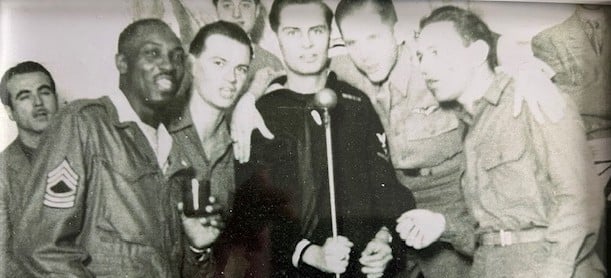
“‘No thanks,’ I said. ‘I haven’t been to Mass or confession since I was a kid. I don’t consider myself Catholic anymore.’”
“One of the soldiers spoke up, ‘Sarge, I think you’re afraid to go to confession with Padre Pio. You’ve got too much to confess. I think you’re scared.’
“‘After what we’ve been through, I’m not scared of anything,’ I replied. ‘I tell you what, I’ll go with you and not only that, I’ll confess everything I’ve done, and it’s quite a list. I’ll blow that priest right out of the confessional.’
“The next morning, we took a jeep to San Giovanni Rotondo, where we got in a long line for confession that extended all the way up a hill to the monastery. The line was moving slowly, and after about an hour, I realized that we were never going to make it before we were due to head back. Disappointed, we got out of line.
“As soon as we started back down the hill, someone at the top yelled that Padre Pio wanted the American GIs to come to the front—the pilgrims can wait.
“Astonished, we looked at one another and then headed up the hill. I found myself at the front of the line, and when it was my turn, I knelt down in front of Padre Pio. I opened up to him and confessed everything, just like I said I would. When I finished, Padre Pio was silent, and I wasn’t sure what came next.
“Then, softly, warmly, Padre Pio said, ‘Son, when you were a young boy, you dreamed of becoming a Catholic priest. Persevere, and you will become a priest.’ He then blessed me, forgave my sins, gave me penance, and told me who to see when I got back to the States.
“I walked out into the fresh air, tears streaming down my face. I had not thought about that dream since I was a child—and I had told it to no one. My life changed that day, and as you can see, my long-forgotten dream became a reality.

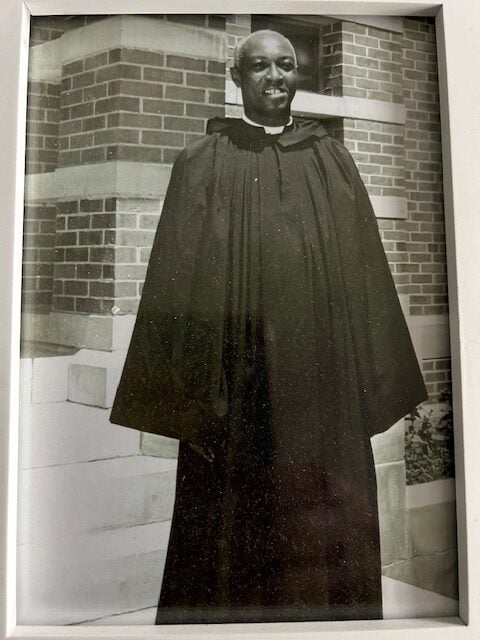
“But that day wasn’t the end of the story. Our outfit would not pull out for a month, and we went back to Mass on many occasions. In fact, I was asked to serve as one of Padre Pio’s altar boys.
“There, I witnessed Padre Pio suffer the Passion with Christ when he consecrated the Eucharist. His wounds would begin to bleed, his walking became painful, he would perspire, sometimes the sweet smell of perfume emanated from his wounds, and he would stop for long pauses in silence on the altar. Anyway, as you can see, I made it home, joined the Monastery, and have been here ever since.”
“So, young man, there is not a serious historian in the world that would deny that Jesus walked on the earth or even that He died on the cross. The question is—can He change your life?
“I know He changes lives—because He changed mine—and if you ask, it will be given you; if you seek, you will find; if you knock, it will be opened to you (see Mt. 7:7). Then, pay attention, humble yourself, and open your eyes—you will begin to meet many others, like Sargent Columban, whose lives and hearts have been transformed by Jesus Christ all around you.
“And maybe, just maybe,” I said with a smile, “the next transformed life and heart will be yours.”
Photo by Museums Victoria on Unsplash. In-text photos provided by the author.

